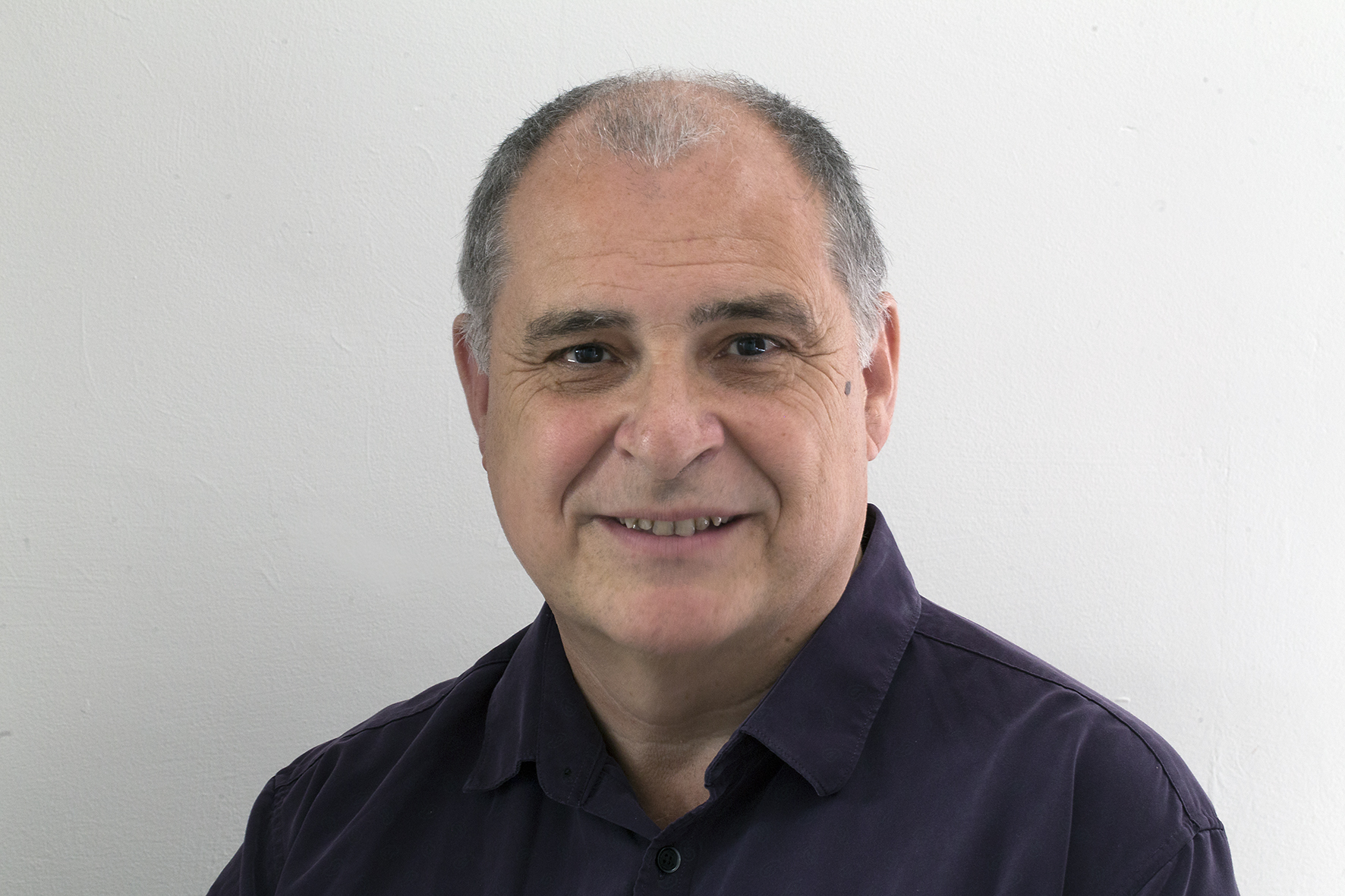In this guide we'll reveal what you can see in the night sky tonight, and throughout the month.
Those of us who enjoy stargazing and observing the night sky can't always plan when and where we're going to get the chance to gaze upwards.
Busy schedules, light pollution, the weather: sometimes finding even just 30 minutes to stand and stare up at a clear, dark night sky and take in the planets, stars and constellations can be a feat in itself.
So when you do find the time, you'll need to know what's visible in the night sky tonight, and the best things to look out for when stargazing.
Complete newcomer? Read our guides to the best telescopes for beginners and astronomy for beginners.
Here's our stargazing guide to what you can see in the night sky tonight.
Our guide is centred around what's visible from the UK, but all northern hemisphere observers should be able to use it, with the odd adjustment to stated times.
In our guide, we use Universal Time (UT) and British Summer Time (BST). UT is the standard time used by astronomers around the world. BST is one hour ahead of UT
We also use RA (Right ascension)and dec. (declination).
These coordinates are the night sky’s equivalent of longitude and latitude, describing where an object is on the celestial ‘globe’.
For help with these, read our guide to celestial coordinates.
For more advice, read our guide on how to stargaze or sign up to receive the BBC Sky at Night Magazine e-newsletter for weekly tips delivered directly to your email inbox.
If you're south of the equator, find out what you can see in the Southern Hemisphere night sky tonight.
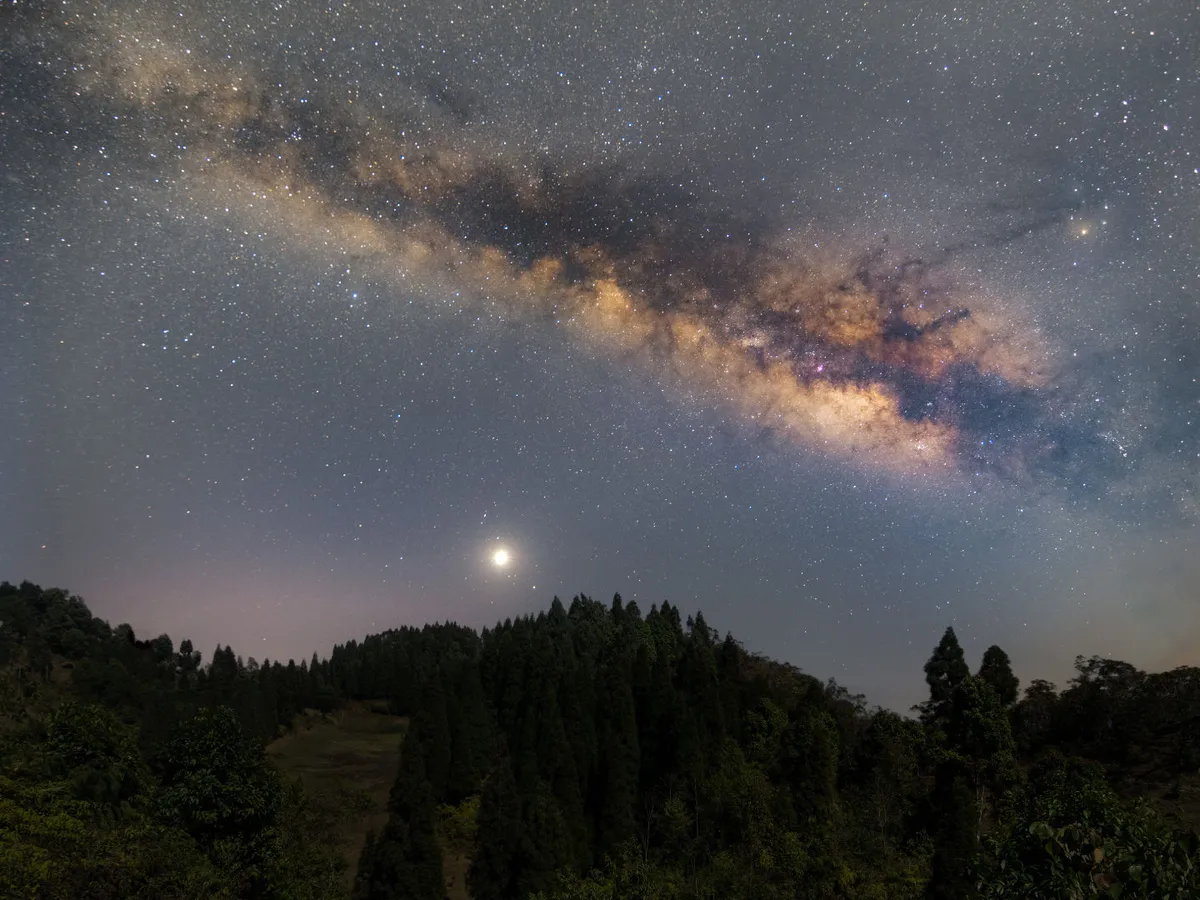
What's in the night sky tonight?
May astronomy highlights
- 6 May Eta Aquariid meteor shower (am)
- 8 May Ultra-thin waxing crescent Moon lies near the Pleiades (pm)
- 14 May Waxing crescent Moon lies near M44 at 01:00 BST
- 17 May Asteroid 2 Pallas reaches opposition
- 24 May Full Moon occults M4 and is near Antares (am)
Comets and asteroids
It's a poor show for planets this month, but things will start to get better soon.
Staying within the Solar System, comet C/2023 A3 Tsuchinshan-ATLAS should be developing nicely this month, passing across the southern part of the Bowl of Virgo and brightening all the while.
Predictions have it reaching mag. +9.8 at the end of May, which is well within small telescope range.
The Solar System is also represented with minor planet 2 Pallas reaching opposition on 17 May.
Located within Hercules, 2 Pallas reaches a small telescope friendly brightness of mag. +8.9 at opposition.
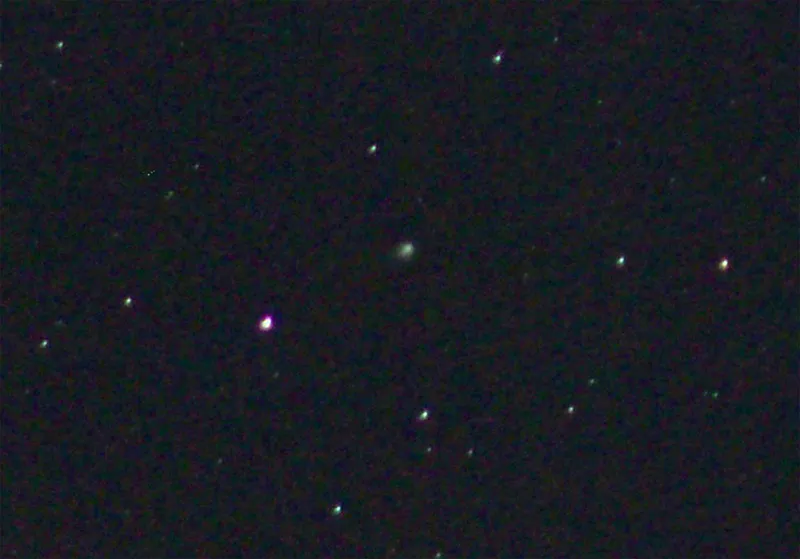
Meteor shower
Comets and meteor showers are intrinsically linked. The Eta Aquariid meteor shower peaks on the evening of 5 May, but UK observation cannot begin until the shower’s radiant is close to rising on the morning of 6 May.
The absence of the Moon will help keep the sky dark, but this shower really favours those further to the south.
If you get to see an Eta Aquariid trail blazing across the sky, that’s a tiny piece of comet 1P/Halley vaporising in Earth’s atmosphere.
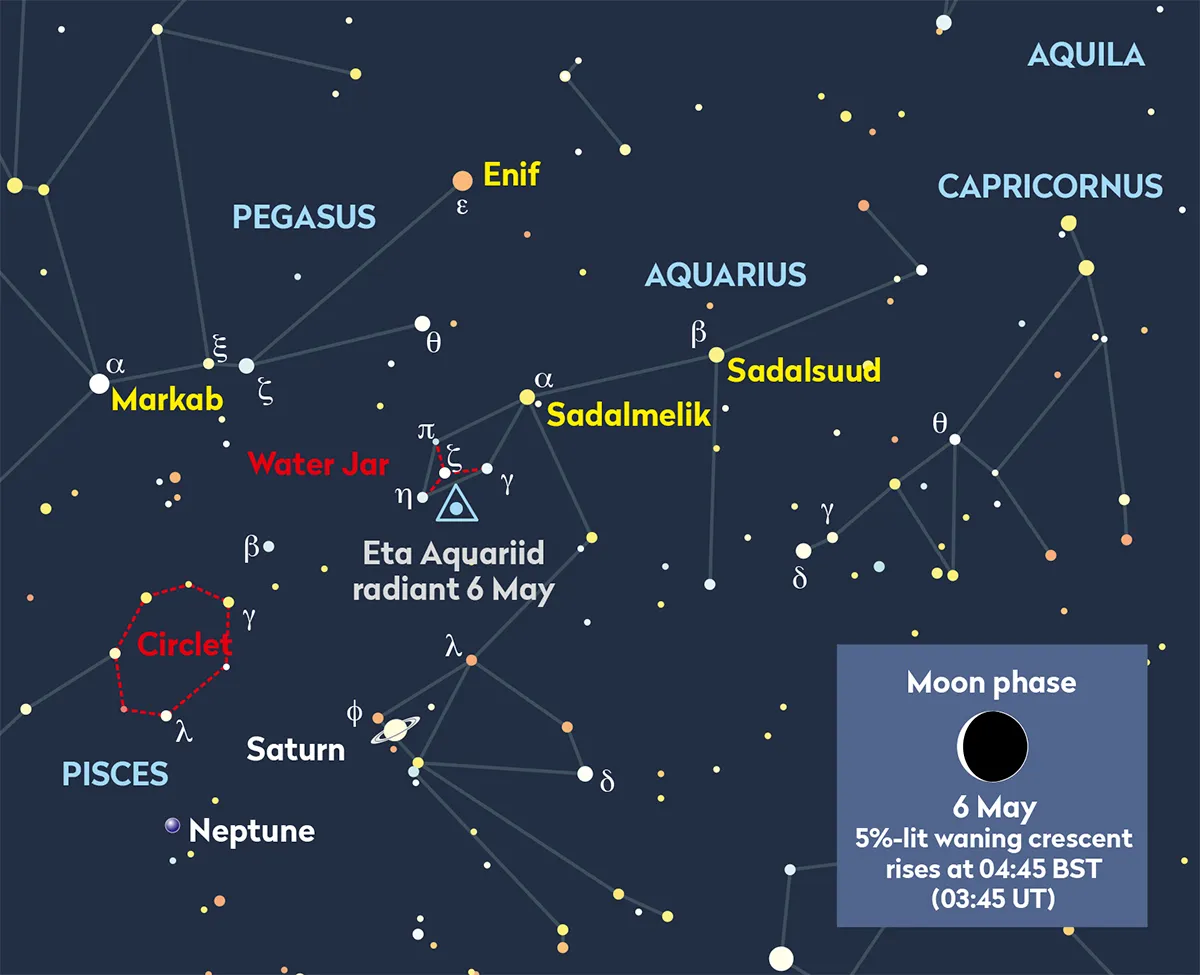
The Moon
The Moon shows a very thin phase on the evening of 8 May, visible shortly after sunset.
This less than 1% illuminated Moon will sit near to the Pleiades open cluster, although the bright evening twilight will make the cluster hard to see properly.
Noctilucent clouds
Nights in May make stargazing increasingly difficult.
As we approach the Northern Hemisphere’s summer solstice on 20 June, the bright and prolonged period of evening twilight reduces the night-time period to its shortest length for the year.
Traditionally, the last week in May is the time to start looking out for noctilucent cloud displays and it’ll be interesting to see what happens in 2024.
Last year’s displays were few and far between, possibly a consequence of increasing solar activity.
If this is the reason, the prospects for 2024 may be poor too, but this is an area where observation is really important.
In particular, noting the absence of a display is just as important an observation as noting a positive noctilucent cloud appearance.
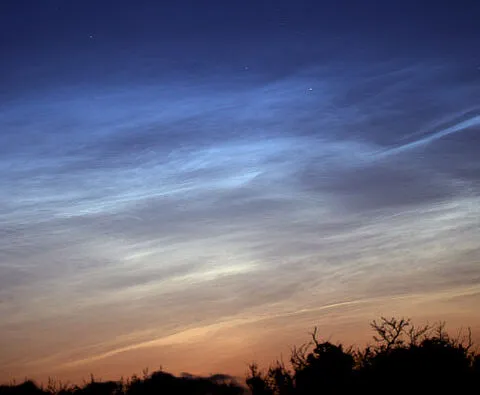
Stars and constellations
The trailing constellations of spring and leading patterns of summer jostle for centre stage this month.
The bright orange star Arcturus is very obvious, high in the southern part of the sky as darkness descends.
This sits at the pointed end of a large kite-shaped asterism, the main shape in Boötes, the Herdsman.
To the east of Boötes is Corona Borealis, the Northern Crown, followed by Hercules, the Strongman.
From the UK, Hercules appears upside down, a large sprawling constellation with no really bright stars.
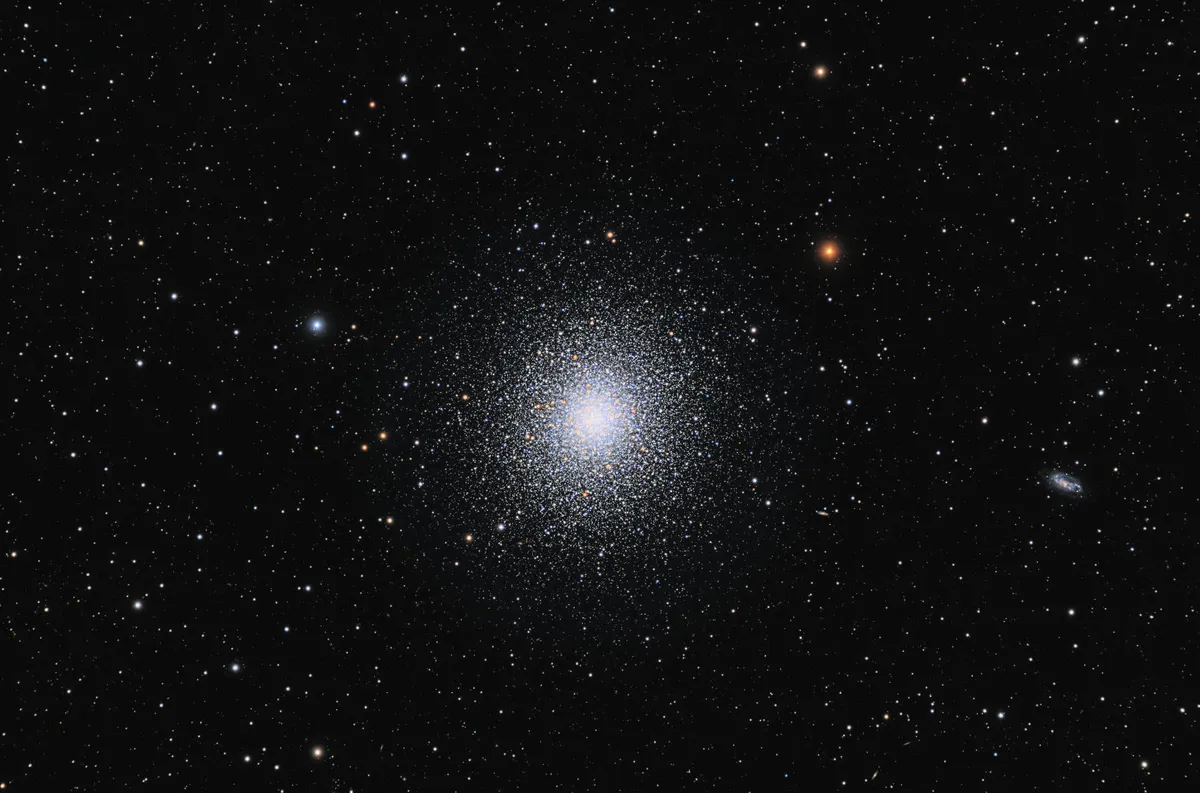
The main pattern here is the small Keystone asterism, which is the guide to the fantastic deep-sky object M13, the Great Globular in Hercules.
Turn a telescope on M13 and you can’t fail to be amazed.
South of Hercules is the large, sparse form of Ophiuchus, the Serpent Bearer with the medium- bright star Rasalhague (Alpha (α) Ophiuchi) marking Ophiuchus’s head near Rasalgethi (Alpha (α) Herculis).
Ophiuchus is represented by a large, roughly rectangular form, the serpent he carries is represented by the constellation Serpens, the Serpent.
Uniquely, this is split in two by Ophiuchus, the part to the west being Serpens Caput, the Serpent’s Head, and that to the east being Serpens Cauda, the Serpent’s Tail.
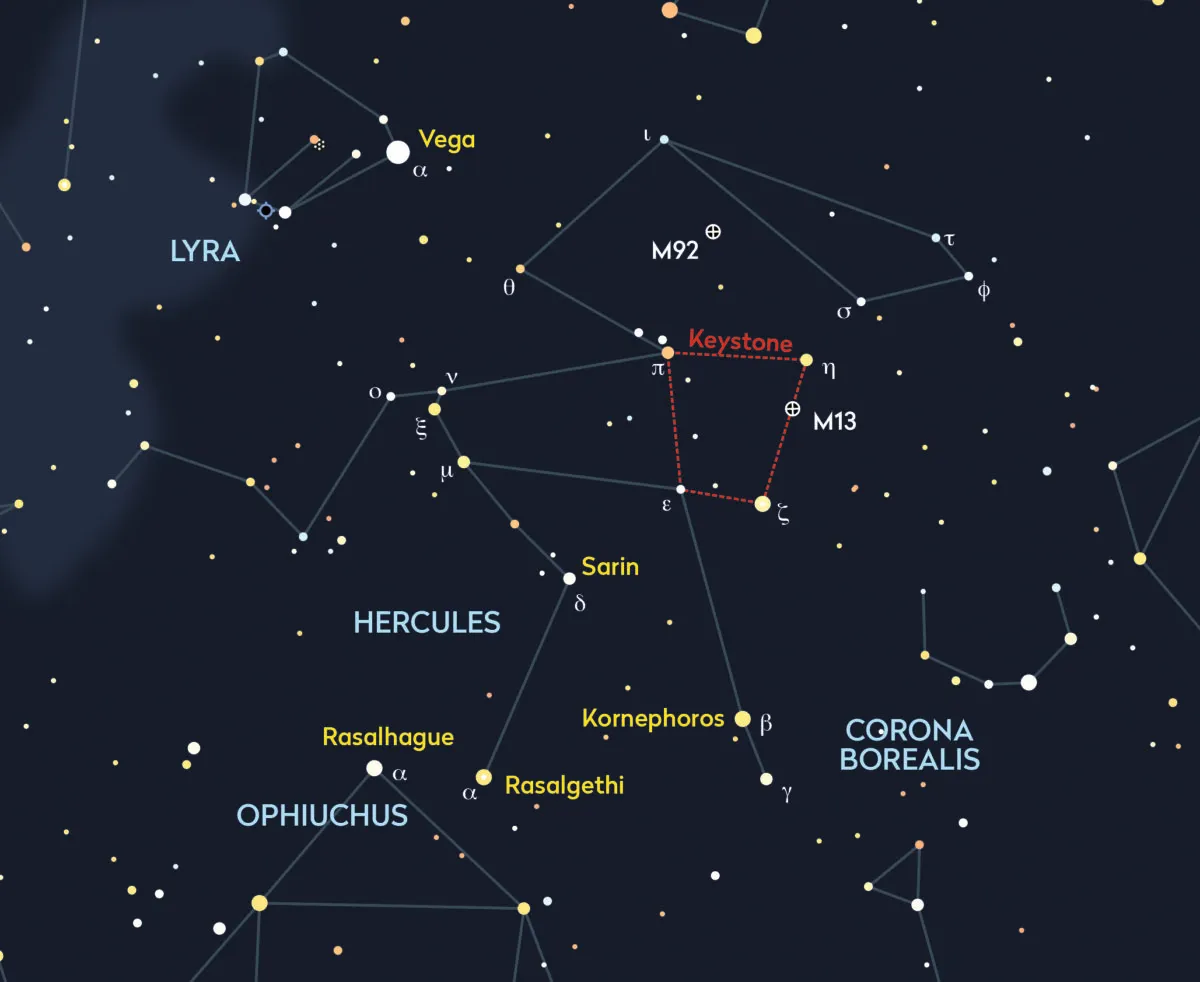
Night sky in May 2024, night-by-night
Wednesday 1 May
The lunar clair-obscur effect known as the Cutlass is visible this morning, reaching its peak around 04:30 BST (03:30 UT) when the Moon will be low above the southeast horizon in twilight.
Thursday 2 May
A good time to get out your telescope and search for deep-sky objects in Crater and Corvus. Due to creeping bright skies, this region is best viewed at the start of May.
Friday 3 May
The spectacular globular cluster M13 in Hercules is close to its highest point in the sky around 02:00 BST (01:00 UT), the perfect position to get a view of this amazing object.
Saturday 4 May
The 20%-lit waning crescent Moon sits 3.3° east of mag. +0.8 Saturn this morning.

Sunday 5 May
Early risers will get to see the 12%-lit waning crescent Moon near mag. +1.1 Mars. Separation is around 1.3° just after both rise at around 04:40 BST (03:40 UT).
Monday 6 May
The Eta Aquariid meteor shower should reach its peak around 22:00 BST on 5 May 2024, meaning the best views from the UK will occur in the run-up to dawn on 6 May. Moon conditions are favourable this year.
Wednesday 8 May
A very thin waxing crescent Moon, less than 1%-lit, appears low in the northwest after sunset. This Moon is separated by 4.1° from Jupiter and 2.8° from the Pleiades.
Thursday 9 May
Mercury, Venus, Mars and Saturn are potentially naked-eye planets in the morning sky, but are very low as sunrise approaches, Venus being too close to the Sun to be seen. Mercury reaches greatest western elongation (26.4°) today and shines at mag. +0.6.
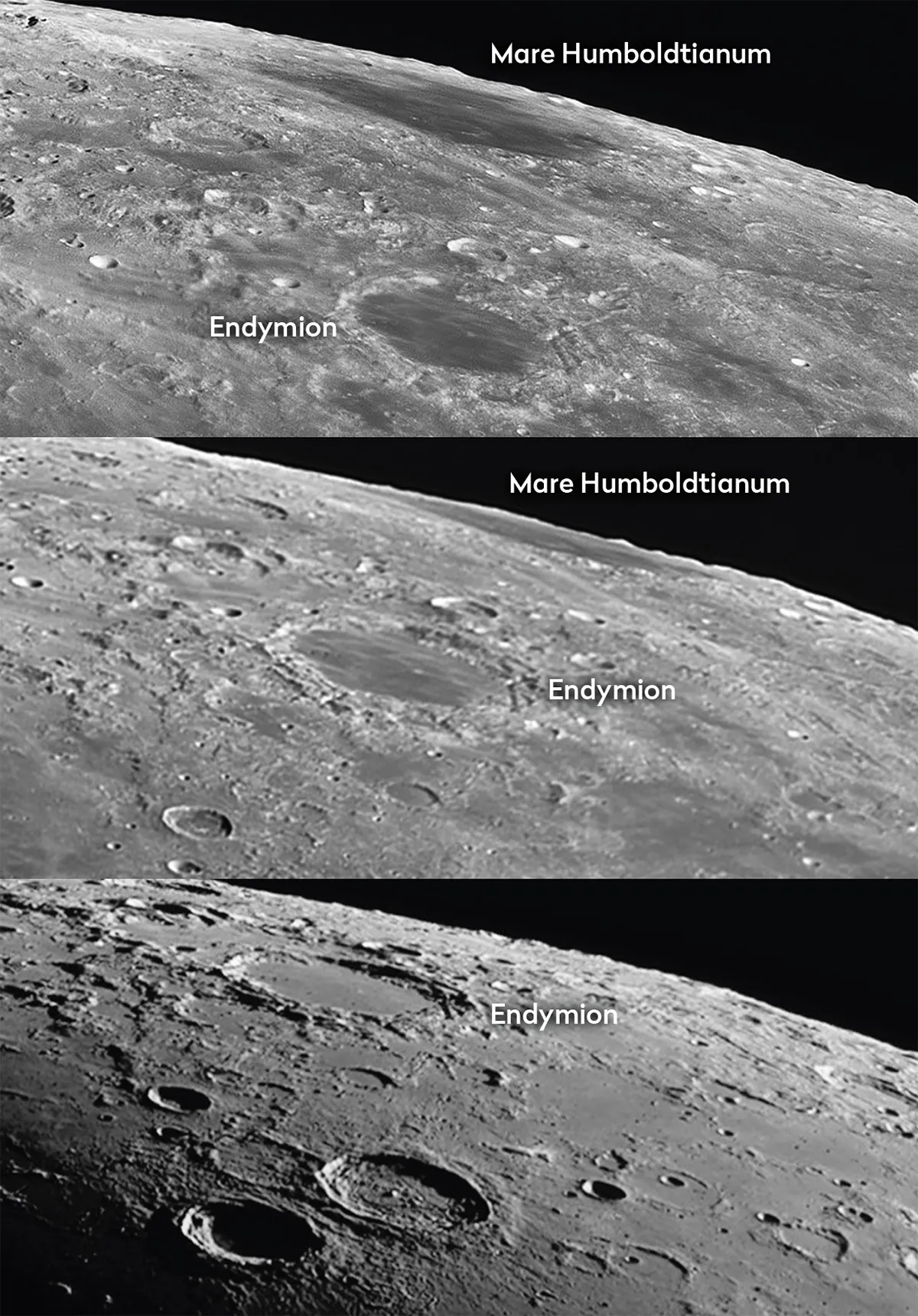
Friday 10 May
Conditions are good today for observing the libration-zone crater Humboldt.
Sunday 12 May
Irregular variable star R Coronae Borealis is well-placed currently. Easy to find inside the crown of Coronae Borealis, see if you can spot it. If not, it may be in a dim phase.
Tuesday 14 May
As this morning’s 35%-lit waxing crescent Moon approaches setting around 02:00 BST (01:00 UT), it sits 2.3° north of the Beehive Cluster, M44.
Wednesday 15 May
The clair-obscur effects known as the Lunar X and V are both visible under daylight conditions around 16:00 BST (15:00 UT). The effect known as the Face in Albategnius is at its best around midnight BST (23:00 UT).
Thursday 16 May
If you’re up in the early hours, look out for the head and neck of Nessie, a trick of the light in the crater Ptolemaeus, best seen around 01:40 BST (00:40 UT).
Later in the day, the Eyes of Clavius clair-obscur effect is visible around 21:30 BST (20:30 UT).
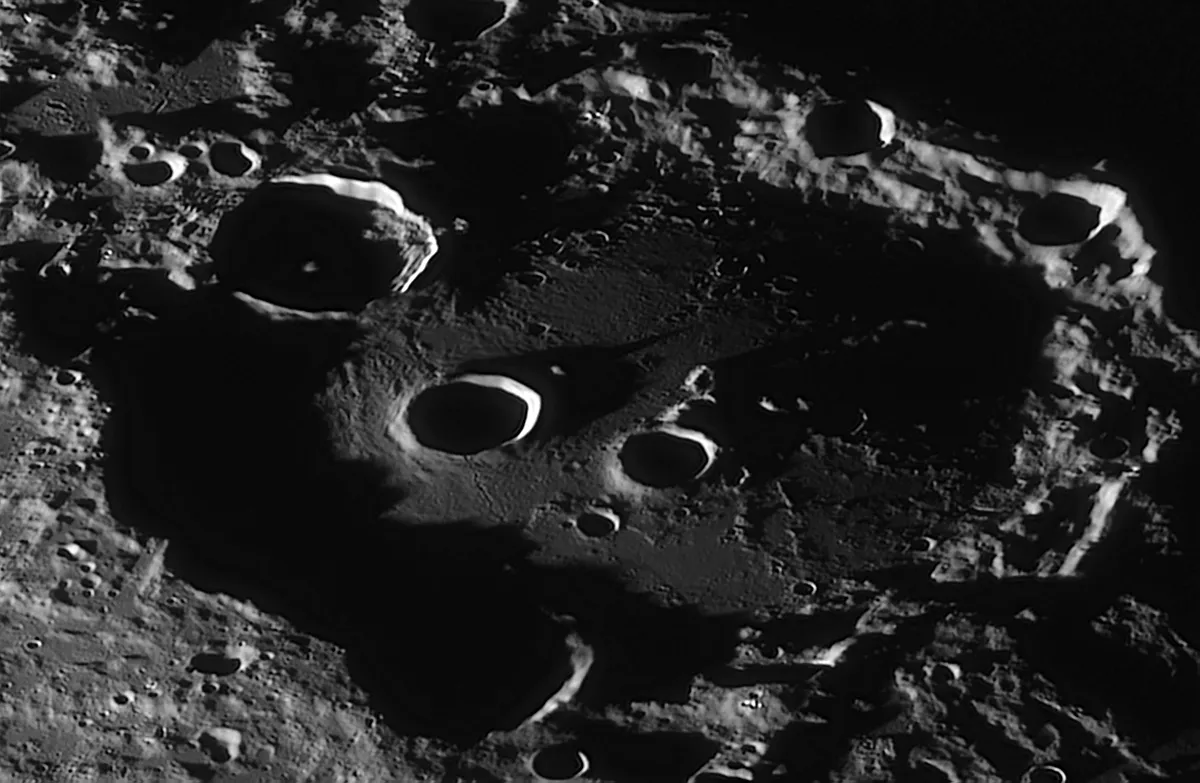
Friday 17 May
The curved shadow known as Plato’s Hook is visible in the lunar crater Plato around 02:35 BST (01:35 UT).
Minor planet 2 Pallas reaches opposition in Hercules.
Tuesday 21 May
As we approach the end of May, it’s worth keeping a lookout for early noctilucent cloud displays. An early report will provide valuable data for how 2024’s season develops.
Friday 24 May
The full Moon this morning occults the globular cluster M4 before heading to a position 33 arcminutes due south of Antares just before setting.
Friday 31 May
Saturn gets its second visit of the month from the Moon. With a 45%-lit waning crescent phase, it lies 3.2° southwest of the planet this morning.
Share your observations and images with us, or send us your astronomy questions to contactus@skyatnightmagazine.com
